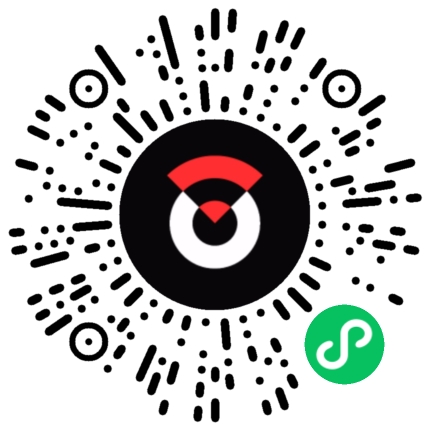
微信公众号

微信小程序
【摘要】 每日营销资讯
一、品牌
鸿星尔克与钉钉签署专属音视频合作方案
鸿星尔克实业与钉钉签署专属音视频合作方案。鸿星尔克总部,分公司以及全国5千家门店均可通过钉钉软硬一体音视频方案。
十三余把王者皮肤做成汉服
今年双十一,王者荣耀和十三余合作推出了“游龙清影”、“金色仲夏夜”、“乞巧织情”三款皮肤的主题华服。

卫龙通过港交所上市聆讯
据北京商报报道,11月14日,卫龙美味已通过港交所上市聆讯,摩根士丹利、中金公司和瑞银集团为联席保荐人。港交所文件显示,卫龙计划集资10亿美元。卫龙方面表示,此次IPO募资将用于扩大和升级企业生产设施与供应链体系。根据最新的招股文件,从2018年至2020年,卫龙的营业收入和净利润呈现持续增长态势。
麦当劳确认与Uber和DoorDash达成食品配送合作协议
麦当劳确认,该公司与出行公司优步(Uber)和“美版饿了么”DoorDash达成(食品配送合作)协议。
二、互联网平台
斗鱼:三季度营收23.48亿元,同比下降7.8%
斗鱼发布2021年三季度业绩报告。三季度,斗鱼营收23.48亿元,同比下降7.8%;调整后净亏损7270万元,亏损同比收窄26%。
网易发布2021年第三季度财报
网易发布2021年第三季度财报。财报显示,该季度网易实现营收222亿元,同比增长18.9%,市场预期210亿元;实现Non-GAAP净利润39亿元,上年同期39.7亿元。其中在线游戏服务净收入达159亿元,同比增加15%;创新及其他业务净收入为49亿元,同比增加26%;网易有道净收入达14亿元,同比增加55%。
苹果回应秘密为第三方App买广告:开发人员知情,该模式已运行五年
针对媒体报道的“秘密”为订阅应用购买广告以提高抽成的新闻,苹果公司周一回应称,这是一种错误描述,开发者完全知道苹果公司代表他们投放广告。苹果回应称,公司投放广告来宣传所分销的应用已有5年时间,这些广告上明确标记来自App Store。
多位游戏公司内部人士表示,游戏版号获或将在近期恢复审批
11月转眼已过半。截至发稿日前,国家新闻出版署最新一批国产网络游戏版号审批名单的公布时间仍定格在7月22日。国产网游版号已连续3个月没有发放。多位游戏公司内部人士表示,游戏版号获或将在近期恢复审批。
三、服务机构
蓝色光标:与腾讯在作为元宇宙入口的虚拟人业务有较深入合作
蓝色光标在互动平台表示,公司与腾讯在游戏、动漫、阅文等层面有深入合作;同时,在作为元宇宙入口的虚拟人业务,也有较深入合作。此外蓝色光标还称,公司有元宇宙相关技术研发团队,近期会发布元宇宙战略。
火山引擎官网预告:12月将办云产品发布会
火山引擎近日在官网更新信息,确认将于12月2日发布云产品,但未透露其最新产品是否包含计算、存储、网络等IaaS云基础设施。此前,字节跳动宣布成立六个业务板块,火山引擎由公司技术中台发展成为企业服务板块,业务的独立性和重要性进一步提升。
魔筷升级快手系统接口
为响应快手号召,魔筷科技日前对快手系统接口进行升级,魔筷星选App商品均可一键上架到主播直播间,所有主播可正常开展直播售卖活动。据介绍,魔筷是快手的战略投资企业,也是快手的战略核心服务商。
四、案例
B 站带你沉浸式官方催更
B 站联合 UP 主“星有野”为 2021-2022 国创动画作品发布会制作了一支官方预告片。
日本温情广告《完全不像的父女》,你最想保护的人是谁呢
东京电力公司旗下实时资讯类App“TEPCO速报”可以为用户提供停电、暴雨、雷云和地震信息的推送通知。东京电力公司为此推出系列微电影,其中《完全不像的父女(似てない父娘篇)》是系列中第4篇,讲述了父亲与女儿之间的故事。
五、趋势洞察
App Annie 10月指数报告:Instagram反超TikTok登顶全球应用下载榜
App Annie 10 月全球热门应用(非游戏)下载、收入榜上榜应用变化不大,不过下载榜依然竞争激烈,Meesho 上升 5 位替代 Zoom Cloud Meetings 取得第 8 名的位置。印度在线购物应用 Meesho 自今年初开始一直表现着强劲的增长势头,根据 App Annie 数据,其 10 月印度市场下载环比增长 50%。收入榜方面,日本在线漫画阅读应用 piccoma 凭借近一年来的稳定表现跻身全球热门应用(非游戏)收入榜前五。综合两榜来看 Tiktok 依然是当前全球最受欢迎的非游戏移动应用,同时进入下载、收入前二。
Liftoff:2021年社交博彩游戏应用报告
Liftoff发布了“2021年社交博彩游戏应用报告”。根据市场研究公司Statista的数据,这场大流行迫使近1000家美国博彩关门,社交博彩的机会随之而来。2020年,社交博彩板块的全球博彩总收入(GGR)达到62亿美元。预计到2026年这一数字将增至75亿美元。
预测期内,美国社交博彩应用程序在iOS上的收入就接近10亿美元。尽管取得了成功,但社交博彩占游戏应用程序的份额略有下降,比前一年减少了1个百分点。
成本指标:每次安装成本(CPI)平均为7.21美元,最高价格点为2020年11月的7.63美元。Android社交博彩游戏应用CPI为5美元。
广告支出回报(ROA):第7天和第30天的ROA平均值分别为11.12%和25.18%。平台性能非常接近:iOS第7天ROA比Android更好,但到了第30天,Android的性能更好。
应用内功能:对最热门的游戏机制的分析表明,收藏物图鉴是最受欢迎的功能,在排名前100的游戏中有74款使用了这一功能。其他具有显著影响的功能包括存钱罐和战斗通行证。
Adobe:2021年美国黑色星期五优惠低于往年
美国今年的“黑色星期五”促销活动正变得平淡无奇。根据Adobe公司10月1日至11月6日期间对2020年和2021年在线价格变化的比较,由于库存紧张、消费者支出强劲和通胀飙升,电子产品、体育用品和家用电器的优惠折扣都低于去年,工具和家居装修类产品总体上更是没有任何优惠折扣。
零售咨询公司A-Line Partners创始人Gabriella Santaniello表示:“今年将看不到典型的黑色星期五促销活动了。渠道中没有足够的库存,任何人都无法进行优惠力度足够大的促销。”
疫情期间的供应链问题导致库存降低,在最重要的购物季中,零售行业只能押注通过降低折扣力度、减少交易来抵消通胀影响,同时不会损害消费者的需求。但这种策略的风险在于,促销活动乏力和商品缺货可能会导致消费者减少支出。
Edward Jones零售分析师Brian Yarbrough表示:“这可能是一段时间以来促销活动最少的时期之一。”“我们正面临着库存问题,而需求是多年来最强劲的。在今年这种情况下,即使交易很多,也不会像以往那样损失利润。”
六、海外
内容营销人员将如何在 2022 年获胜
After all this time, QR codes are trending (again)
Remember when QR codes made their entrance into the marketing space in 1994? Cool technology. Hardly useful. To discover what was behind that little box, you had to have a QR code app on your phone. Today, you can simply use your camera to read a QR code. And for creators, the technology has gotten simpler and more useful. You can create and customize a QR code almost instantly and place it virtually anywhere.
Video gets (even more) real
Livestream and video on demand (VOD) aren’t going anywhere, except maybe everywhere. Audiences are hungry for brand authenticity, and tech innovators and investors are ready to give it to them.
By 2022, online videos are expected to make up more than 82% of all consumer internet traffic – 15 times higher than it was in 2017.
随着在元界竞争的压力迫在眉睫,主流品牌尝试使用 AR/VR
As marketers look for ways to bridge the post-COVID-19 gap between online and offline experiences, a number of marketers, from direct-to-consumer brands like CUUP and TULA, and legacy brands like Nestlé and Estée Lauder, are hoping to see big returns by investing in an alternative reality.
Nestlé in particular is working with social AR marketing company Camera IQ, leveraging AR across Snapchat and Instagram to market more than 40 of its brands. Most recently, Nestlé used the technology to create a filter for Instagram and Facebook where users could break a KitKat Zebra candy bar in half by moving their head.
That’s not to say AR and VR marketing efforts are new. But since the onset of the pandemic pushed many to spend more time online, and inspired a slew of brands to give the mixed reality space a second look to compete in the social commerce race.
“The consumer behavior we’ve seen has changed forever. Even if we’re going out into the world, we’re still living through, expressing ourselves and sharing through the lens of our camera,” said Allison Ferenci, Camera IQ’s CEO and co-founder, who works with the Nestlé team. “The opportunity for a brand to participate is only increasing.”
The market for alternative, virtual and mixed reality is expected to reach $30.7 billion before the end of the year, — and surge to $300 billion by 2024, according to Statista. And then there’s the looming metaverse. Given this, it’s no surprise to marketing and advertising execs that brands are wanting to take advantage of the opportunity.
Zoom 是否可以避开广告?数据噱头永无止境
Zoom CEO Eric Yuan shot down proposals to introduce ads in 2019 and again in 2020, when some executives floated a chance to capitalize on the influx of traffic and new users during the pandemic. One person who heard Yuan’s response says he called the idea of ads on Zoom “cheap and unprofessional,” The Information reports.
The pandemic made Zoom a household name. But it also blew up expense forecasts (you think your AWS bill is rough?) and awoke sleeping giants. Salesforce acquired Slack, and Microsoft cloned Zoom and made it cheaper within a family of products.
Fast forward a year, and Zoom’s revenue growth is slowing. Suddenly, easy ad revenue doesn’t seem so bad. But trust your instincts, Eric.
Zoom has a large pool of freebie users. So it’s intuitive to serve ads to that group, while preserving the subscription experience. Non-paying users also still accrue heavy bandwidth costs for Zoom, so there’s a legit reason to monetize somehow.
On the other hand, Zoom’s free tier is particularly popular with K-12 students. Add to that the standard blowback over ad privacy and user security – and advertising remains a runway, but one littered with landmines.
整理自互联网
Morketing每日监测11.27:百年老厂牌JWT消失与伟门合并;天猫升级为“大天猫”;微博广告收入增长将进一步放缓;黑五线上销售额 62.2 亿美元;
Morketing每日监测11.29:微软超越苹果成为全球市值最大公司;江南春:拼多多是三四线城市的消费升级,视频付费将愈演愈烈;雷军:AI+IoT是小米未来10年核心战略,已与宜家达成合作
请先注册/登录后参与评论